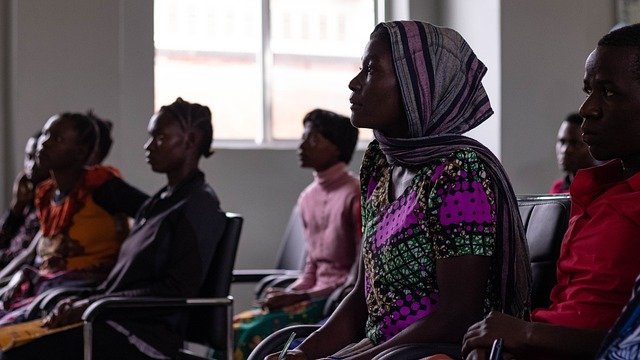Education Access Trends: Global Barriers and Opportunities
Education access is shaped by shifting population patterns, economic structures, and policy choices. Global trends such as migration, urban growth, and demographic change intersect with inequality and governance to create both barriers and new pathways for learning across communities.

Education access is increasingly influenced by large-scale social and economic shifts that reshape who can learn, where learning happens, and what skills are prioritized. Changes in demographics, migration flows, urbanization, and labor market demands interact with inequality, governance, and community networks to determine educational opportunity. Policies and local services that address inclusion, mobility, and wellbeing can reduce gaps, while neglecting these factors can reinforce exclusion across age groups and social backgrounds.
How do demographics affect education access?
Demographic trends alter demand for schooling at multiple levels. Younger population bulges in some regions increase pressure on primary and secondary systems, while aging populations in others raise interest in adult and lifelong learning. Household size, fertility rates, and youth population shares influence resource allocation and classroom capacity. Planning that accounts for projected demographic shifts helps align infrastructure, teacher recruitment, and curriculum planning with actual community needs. Demographic diversity within classrooms also affects pedagogy and support services required to promote equitable learning outcomes.
How does migration influence learning opportunities?
Migration—both internal and international—affects continuity, language needs, and credential recognition for learners. Children from migrant families may face disruptions due to mobility, lack of documentation, or language barriers, reducing enrollment and completion rates. At the same time, migrants can bring skills and demand for diverse programs, prompting expansion of adult education and vocational training. Effective integration policies, recognition of prior learning, and access to local services are important to maintain educational trajectories and to support social and economic inclusion in receiving communities.
How does inequality create barriers to schooling?
Economic inequality, spatial disparities, and social exclusion limit access to quality education. Families with fewer resources often confront higher indirect costs—transport, materials, and lost labor—while schools in disadvantaged areas may lack trained staff or adequate facilities. Gender, disability, and minority status intersect with poverty to compound exclusion. Addressing inequality requires targeted funding, inclusive curriculum design, and community-based interventions that lower participation costs and strengthen pathways from education into employment and civic participation.
How does urbanization change access and mobility?
Rapid urbanization reshapes where learning takes place and how learners reach educational opportunities. Urban areas can concentrate resources—schools, training centers, and digital connectivity—but also produce pockets of exclusion in informal settlements where services are scarce. Mobility within cities affects daily access: reliable transportation and safe routes enable regular attendance, while long commutes or insecure neighborhoods hinder it. Urban planning that integrates schools, local services, and affordable transport supports broader access and contributes to community wellbeing and social cohesion.
How does aging affect lifelong learning and employment?
As populations age in many countries, demand grows for lifelong learning, reskilling, and age-friendly education pathways tied to employment transitions. Older adults may seek retraining to remain in the workforce or to shift careers as mobility and family roles evolve. Employers and governance systems that support flexible learning schedules, recognition of prior experience, and part-time training contribute to sustained employment and social participation. Lifelong learning opportunities also promote wellbeing and civic participation among older cohorts, helping maintain active community engagement.
How can diversity, inclusion, and governance support cohesion?
Diversity in classrooms—cultural, linguistic, and socioeconomic—can enrich learning when inclusion is prioritized. Inclusive policies, teacher training, and accessible materials reduce barriers for marginalized learners and strengthen social cohesion. Civic participation in school governance, community involvement in curriculum development, and transparent funding decisions foster trust and accountability. Good governance aligns education systems with mobility trends and labor markets while protecting equal access. Strengthening local institutions, community networks, and cross-sector cooperation reinforces both educational outcomes and broader social wellbeing.
Education systems face interlocking challenges but also opportunities for adaptation. Integrating demographic evidence, migration-aware policies, and targeted measures to reduce inequality can expand access. Urban planning, mobility solutions, and investment in lifelong learning respond to evolving needs across age groups. Emphasizing diversity, inclusion, and participatory governance fosters learning environments that support employment prospects, community resilience, and civic participation. Ongoing monitoring of trends and coordination across sectors remain central to reducing barriers and realizing opportunities for learners worldwide.





